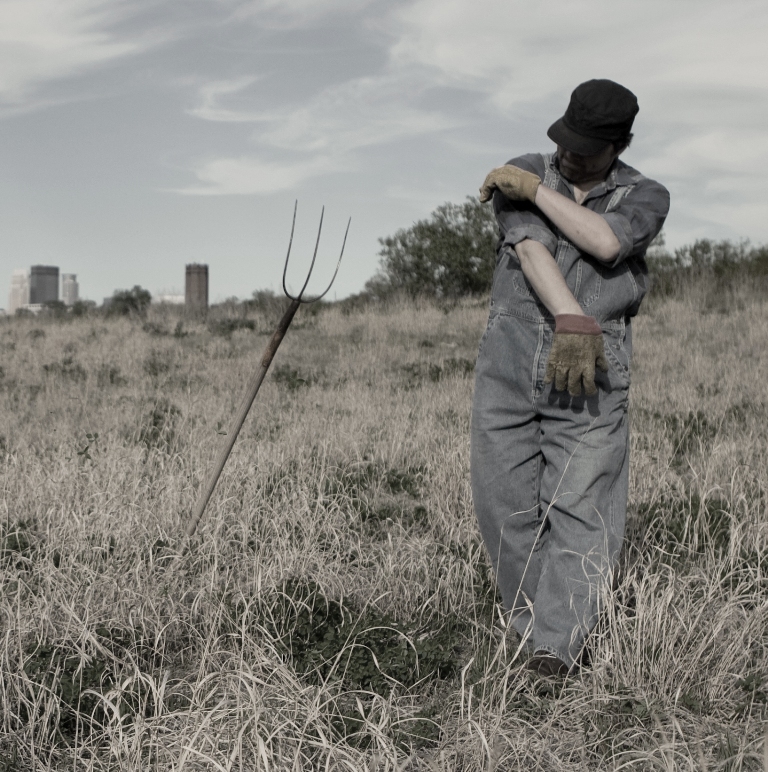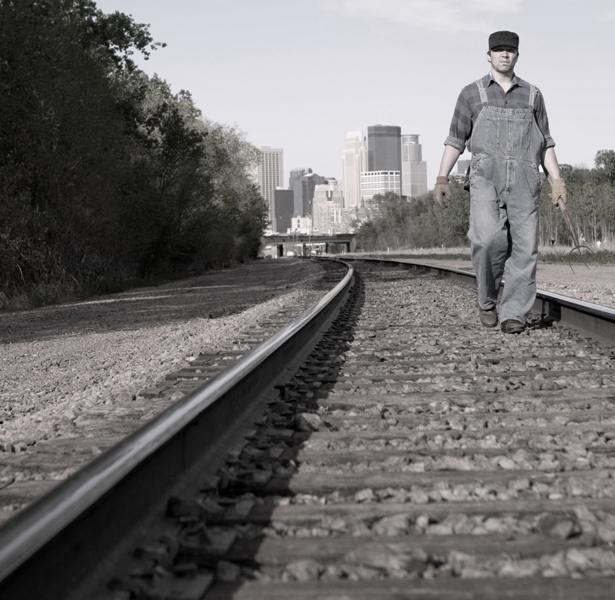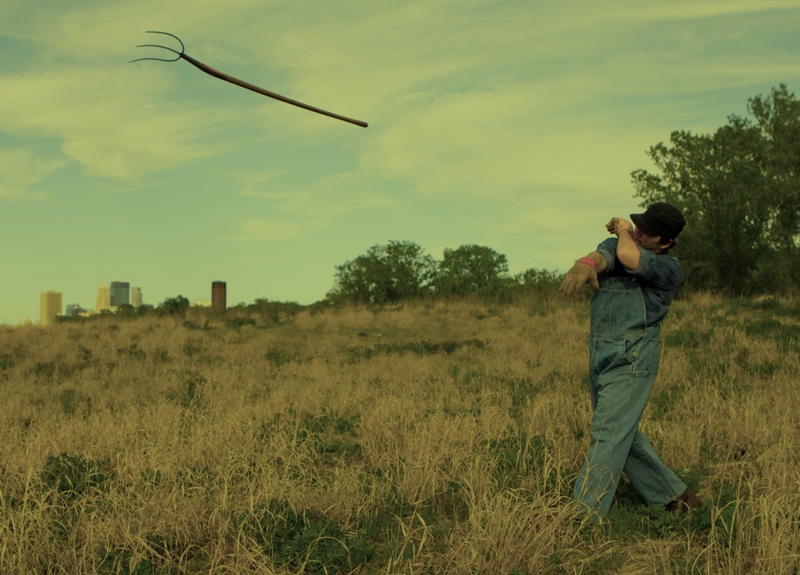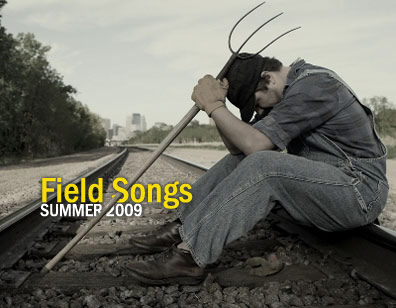Crash and Jump: The Thrill of Black Label Movement
Dance critic Lightsey Darst previews Black Label Movement's new production "Field Songs," which will make its world premiere at the Southern Theater this week with a limited-edition run from May 29 -- June 7.




WHAT YOU GET WHEN YOU SEE BLACK LABEL MOVEMENT IS RISK. Breakneck take-offs, hurtling and sprawling bodies, the whump of impact with the floor or another dancer. And this isn’t just the carefully calibrated simulation of risk, either: these dancers are actively trying to leap higher than they can handle, to knock each other over, to get through. It’s a thrill to see such thrown momentum, but the thrill goes beyond the surface. You can’t see BLM without feeling sympathetic reverberations through your own body, without feeling your own crash and jump.
What you’re feeling, BLM Artistic Director Carl Flink hopes, is the revelation of mortality. “When I see immediate risk it is an opportunity to, in a very small microcosm, examine the arc of life. We know we’re at risk. At some point, it’s going to end.” And it’s typical of Flink’s rather existential viewpoint that he’s not afraid to speculate how — a heart attack, a fast bus, who knows? Before he began his dance career (which includes a stint at the prestigious Jose Limon Company in New York and, now, the chairmanship of the University of Minnesota’s Theater and Dance Department), Flink found his love of the ragged edge in years of serious soccer. In sports, “if you’re trying to master the moment, there’s almost always someone who will take a greater risk and surpass you. It’s not about mastery, it’s about how you keep pushing yourself so you can do something more extreme.” In the often rarefied, removed world of dance, Flink misses this intense apprehension of the now.
Concomitant with BLM’s signature risk is an almost political emphasis on work. This has to do with content — Flink tends towards explorations of the physical lives of ordinary people (ore-boat sailors for last year’s evening-length Wreck, farmers for this year’s Field Songs), but it goes beyond that, too. Flink likes to call his dancers “movers,” a label which emphasizes labor and minimizes frou-frou. What you might usually think of “dancers” as being and doing (physical perfection, performance) is pushed to the side in Flink’s aesthetic. “I don’t want things to be too neat and clean and delineated,” he says. (Is this an anti-aesthetic aesthetic? Hold your questions; we’ll get there.) “I’m not interested in the dancer mastering movement and then riding it like a great surfer on a wave.”
You can see how risk and work fit together in BLM. Risk is not there for its own sake, as a stunt. Instead, risk exists where real work exists. For Field Songs, Flink is using the BLM idiom to express motion “that in urban quarters would be perceived as violent and aggressive — but in the farming situation you’re working with big animals, you’re working with machinery, you’re working with the earth. Just the act of shoveling earth has an aggression to it.” If, on stage, he can get movers to work (rather than dancers to dance), then that action will not be imitated for the stage, but recreated on the stage: “then we’re seeing human beings dealing with real events rather than describing.”
You might lodge some objections to this. Description is a real event, the most stylized dance is a form of work, much physical labor is actually a performance of mastery, etc — you might quibble with the terms, in other words. But, in the first place, Flink does not present any of this as polemic (just as what he likes, what BLM does); and in the second, you won’t quibble with the visceral effect of the BLM aesthetic — particularly not when you see Field Songs.
________________________________________________________
I’m used to the hard-hitting movement, the drama of bodies in a BLM performance, but not to the ebb and flow of personalities — it humanizes all that raw power.
________________________________________________________
With Field Songs, BLM adds a new element. Take a hoedown-style dance (set to the live roots music of The Jinnies), in heavy boots, on sod laid over the stage — awkward as can be, all elbows and swinging limbs. The movers charge it with the usual BLM recklessness, but they’re also giggling, laughing, watching each other, getting caught out by unexpected changes, following sudden capricious impulses of their own. Technically, what Flink’s added here is improvisation — rules-based improv, in which performers have specific options or times in which to make their choices. But, from the audience’s point of view, what this adds to the performance is individual and human vulnerability. Stephanie might make a choice that surprises Bryan. Bryan might make a choice that trips up Laura. Laura might make a choice no one sees. There’s not just the physical risk of crashing into someone, but also the personal risk of putting yourself forward.
This isn’t what I’m used to perceiving from BLM. I’m used to the hard-hitting movement, the drama of bodies, but not to the ebb and flow of personalities. For me, it humanizes all that raw power — and it puts BLM’s money where its mouth is. Real work and real risk, after all, demand real people. Where dancers often put on either a character or a vague, impartial persona, improvisation forces the BLM movers to be more engaged versions of themselves — to “take their sense of who they are at the moment and supercharge it,” Flink says. This presence is all the more necessary because of the intensity of BLM’s movement, even in improvisation: “If you’re not present, you could get poked in the eye.” (In fact, I did see one dancer in rehearsal get a foot in the face. Reaction in the rehearsal room? Laughter and applause. He wasn’t hurt.) Flink wants the audience to feel that “these are people here, real people. They’re the people they are, in this setting, dealing with this set of challenges that has been placed in front of them.”
What the improvisation also brings out is BLM’s diversity. Flink’s never inclined towards a single body-type in his company, but when the long and rangy dancer and the short and muscular dancer take on the same moves, the diversity’s less noticeable than when all these different bodies and personalities create the variations that interest them. In Field Songs, you see such a roil of different people in moments of choice that you might think Flink’s set up his own little menagerie. In fact, as it turns out, this isn’t far from the truth. Flink has a quirk of picturing each of the dancers as a specific type of animal. “What I love about watching animals move is they’re instinctive,” he says. “They’re not trying to project an aesthetic quality.”
This brings us back to the question I promised I’d answer: is the BLM aesthetic an anti-aesthetic? As it turns out, no. The BLM aesthetic is against stylization, systems, and homogenization, but it is robustly for difference, people, the local level, and for that place of weakness, of not-knowing just beyond our limits — what Flink calls our “undiscovered edge.”
Finally, the risks here aren’t just in the dancing. Two BLM movers (Leslie O’Neill and Eddie Oroyan) are stepping out as choreographers in this mixed bill. And Flink is taking a risk with the structure of Field Songs, daring to go with what interests him, what rises to the surface, even when it doesn’t conform to an overall scheme.
What’s the result of all this? Intense snatches that dissolve, full-out physical exertion cut by the intricacy of private gesture, or a fight cut by a laugh, a dance tapering off into a song. Everything — an embrace, a leap, a story — left unfinished, felt but not reconciled. It’s the common work of life, in all its brief glory.
*****
Performance details:
Field Songs by Black Label Movement will be on stage at the Southern Theater in Minneapolis May 29 through June 7.
Watch a video preview of Field Songs recently posted by 3-Minute Egg:
About the writer: Lightsey Darst writes on dance for Mpls/St Paul magazine and is also a poet who served as the founding coordinator of mnartists.org’s What Light: This Week’s Poem publication project.